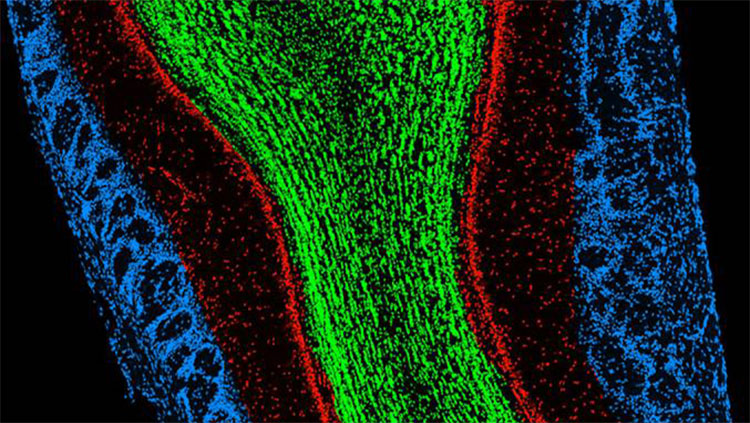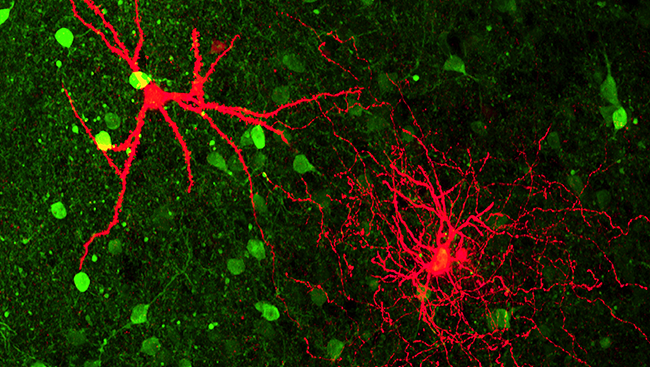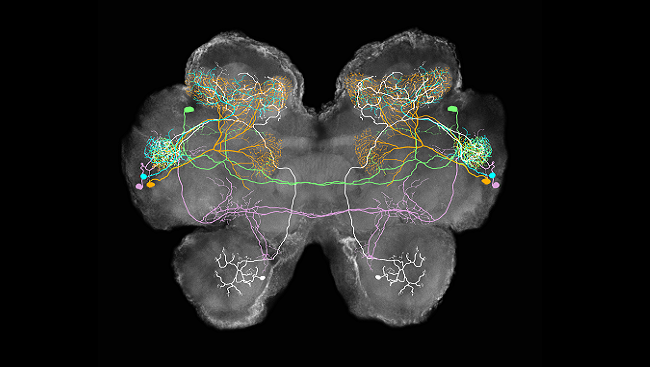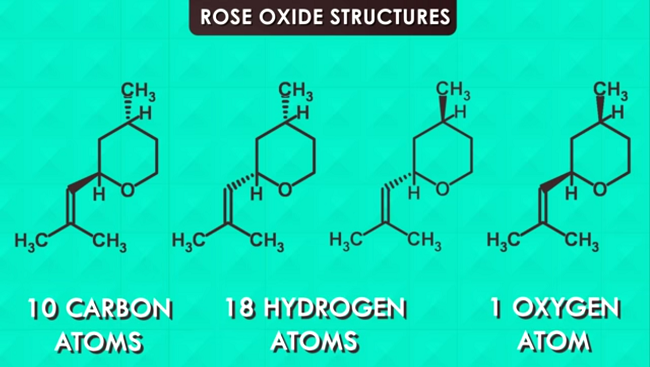Seeing Your Sense of Smell
- Published7 Feb 2014
- Reviewed7 Feb 2014
- Author Michael W. Richardson
- Source BrainFacts/SfN
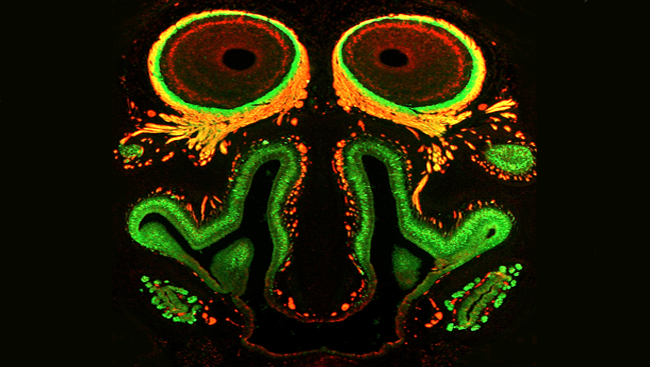
This image may look like a carnival mask, but it actually shows the key structures mammals use every time they smell. The “mouth” in the picture highlights the nasal cavity of a developing mouse, which is lined with specialized odor-sensing cells (in green). When the animal breathes in, airborne odor molecules activate these cells, which then signal to the olfactory bulbs — the “eyes” in this image. This brain structure processes the input from the cells in the nasal cavity, differentiating the smell of a blooming flower from bread baking in the oven.
CONTENT PROVIDED BY
BrainFacts/SfN
Also In Smell
Trending
Popular articles on BrainFacts.org





